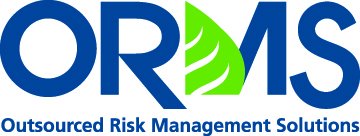Opportunity Zones: A $6 Trillion Moonshot?
Looking Back, Moving Forward
December 16, 2018Lessons from the Government Shutdown
February 7, 2019Opportunity Zones: A $6 Trillion Moonshot?
Despite being overshadowed by other provisions of the massive 2017 Tax Cuts and Jobs Act, the Opportunity Zone incentive included in that legislation may present the most significant and longest-term economic impacts for the country. Investors, community activists, and real estate developers are just beginning to parse the potential $6.1 trillion opportunity promised in the program’s name.
What are Opportunity Zones?
“We want all Americans to experience the dynamic opportunities being generated by President Trump’s economic policies. We anticipate that $100 billion in private capital will be dedicated towards creating jobs and economic development in Opportunity Zones,” said Treasury Secretary Steven T. Mnuchin in an October 19, 2018 Treasury Department press release announcing proposed guidance. “This incentive will foster economic revitalization and promote sustainable economic growth, which was a major goal of the Tax Cuts and Jobs Act.”
The provision offers investors relief from capital gains tax for new investment in designated geographic areas known as Opportunity Zones. These benefits include tax deferral on prior gains through 2026, and tax-free growth on qualified gains held for at least 10 years. Opportunity Zones retain their designation for 10 years, but under the proposed regulations, investors can hold onto their investments in Qualified Opportunity Funds through 2047 without losing tax benefits.
The key is that all investments must be made through an approved Opportunity Fund, which must, in turn, invest at least 90 percent of its raised capital in Opportunity Zones. Additionally, eligible investors including individuals, corporations, businesses, REITs, estates and trusts must invest their capital gains in an Opportunity Fund within 180 days of receiving those gains.
To qualify as an Opportunity Zone, a census tract must have a poverty rate of 20 percent or higher, or a median household income less than 80 percent of the surrounding area. Governors may designate up to 25 percent of their state’s qualifying census tracts as Opportunity Zones, subject to federal approval.
The Treasury Department has certified 8,761 communities in all 50 states, the District of Columbia and five U.S. territories as Opportunity Zones to date. Based on data from the 2011-2015 American Community Survey, these areas had an average poverty rate over 32 percent, compared with a national average of 17 percent, and had an unemployment rate 1.6 times the national average.
An Opportunity for Impact
The often-cited figure of $6.1 trillion represents the estimated total addressable market (TAM) for Opportunity Fund investment, as calculated by the Economic Innovation Group, a non-profit started by billionaire ex-Facebook president (and Napster founder) Sean Parker. This number was derived from both the $3.8 trillion in unrealized capital gains in stocks and mutual funds held by individuals and the $2.3 trillion in unrealized gains held by U.S. corporations as of the end of 2017.
Of course, the entirety of this enormous pile is not accessible to Opportunity Fund managers and real estate developers. But it illustrates the scale of opportunity available for the investment and revitalization of economically disadvantaged communities across the country. As with any government tax incentivized program, the devil is truly in the details. Effectiveness will be measured by how well investment is directed to where it is most needed, and whether the ideals of transparency, inclusion, and collaboration with local communities are prioritized.
It is worth watching how this available capital will be used over the next few years to help turn around struggling rural, suburban, and urban communities ripe for new development and economic growth.

